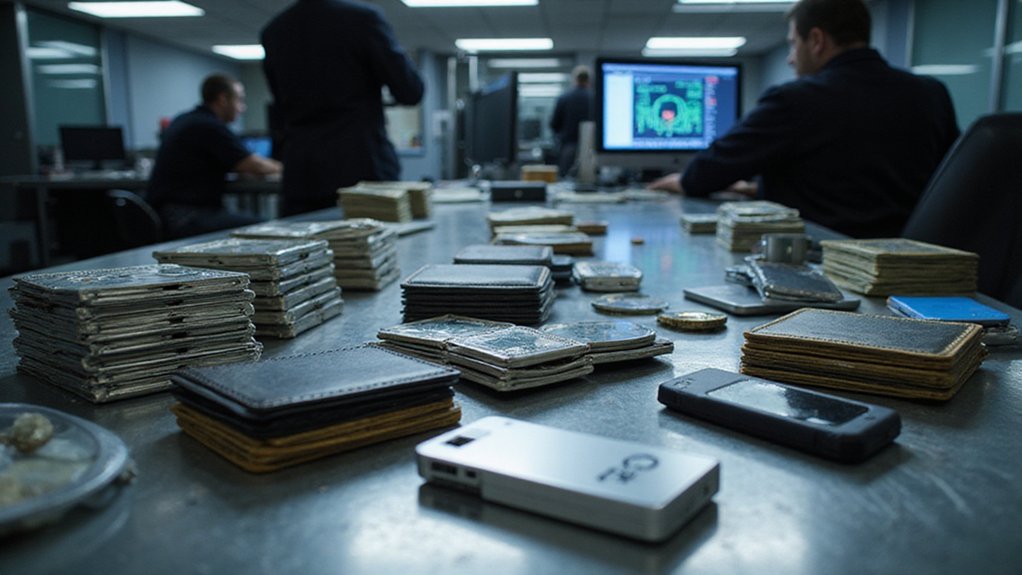The US Secret Service has quietly amassed nearly $400 million in seized cryptocurrency over the past decade, transforming the agency traditionally associated with presidential protection into one of the world’s largest custodians of digital assets—a designation that would likely amuse the same scammers whose ill-gotten gains now sit locked in the government’s cold storage wallets.
This extraordinary accumulation stems primarily from romance-investment frauds and fraudulent investment platforms, with the agency’s Global Investigative Operations Center (GIOC) employing sophisticated blockchain analysis tools to trace digital breadcrumbs across the decentralized landscape.
The irony is palpable: criminals who chose cryptocurrency precisely for its perceived anonymity now find their transactions permanently etched in an immutable ledger, readable by federal investigators armed with advanced forensic capabilities.
Digital criminals seeking anonymity inadvertently created their own permanent evidence trail, perfectly preserved for federal investigators to follow.
The Secret Service’s largest single seizure—a staggering $225.3 million linked to cryptocurrency investment fraud—demonstrates the scale of digital deception targeting victims worldwide. Over 400 victims have been identified in major scams connected to these seized funds, many of them older adults who believed they were making legitimate investments rather than funding sophisticated criminal enterprises.
Strategic partnerships with industry giants like Coinbase and Tether have proven instrumental in these operations. Tether’s cooperation in freezing $225 million USDT linked to scams exemplifies how public-private collaboration can effectively combat financial crimes in the digital sphere.
These partnerships provide essential blockchain insights and wallet-freezing capabilities that would otherwise remain beyond law enforcement’s reach. Modern agencies also leverage private internet access monitoring tools to enhance their investigative capabilities across digital networks.
The agency’s decision to maintain custody rather than immediately liquidating seized assets serves multiple investigative purposes while inadvertently positioning the Secret Service as a major player in cryptocurrency custody. These assets remain secure in offline cold wallets, protected from both hackers and market volatility—though one suspects the original owners might prefer the latter risk. The offline storage method ensures that criminals cannot recover or transfer stolen assets once they have been seized.
Beyond seizures, the Secret Service leads global training programs on crypto fraud detection, enhancing international law enforcement capabilities in blockchain forensics. Many of these fraudulent schemes involve complex derivative instruments similar to perpetual contracts, which allow criminals to maintain positions indefinitely while avoiding traditional regulatory oversight.
Civil forfeiture complaints filed through coordinated efforts with U.S. Attorney’s offices underscore the government’s commitment to dismantling criminal networks while pursuing asset recovery for victims who fell prey to increasingly sophisticated digital deception schemes.









